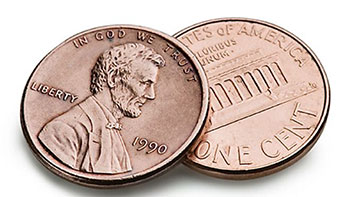TWO CENTS WORTH
That “good” advice might cost you big
By John Grochowski

As long as there has been video poker, there have been players giving advice to friends, spouses or total strangers who just happened to be at the next machine. And as long as there have been players giving advice, some of their ideas have not been quite right.
I’ve been playing video poker for about 30 years, so I’ve encountered many an adviser. I refrain from giving advice at the games unless asked. When I am asked, it’s usually by my wife, Marcy.
To go off on a slight detour, our finest moment in advice given and applied came when Marcy and I were playing adjacent Deuces Wild machines. She was dealt three 2s along with a 4 and a 6 of diamonds.
She nudged me and said, “I should just keep the straight flush, right?” I told her she should just hold the three 2s.The worst she could do was step down to four of a kind, and she had the chance at five of a kind, a wild royal or, best of all, the fourth 2 and a 1,000-coin jackpot.
Lo and behold, the draw brought the final deuce. Dinner was on her that evening.
But unless asked, I save the advice for the written word.
Still, I can’t help but listen to the give-and-take between neighboring players, as in a fine autumn morning when I found myself at a 9-6 Double Double Bonus Poker machine. A man and a woman occupied the two seats to my right.
He seemed to be the more experienced player, and he was giving advice on how to play her hands. It was loud enough that I couldn’t ignore it, though I avoid giving my own two cents in such situations.
When she had two pairs, jacks on top of 9s, he told her to keep the jacks and toss the 9s.
“The worst you can do is finish with the pair of jacks,” he said. “That pays the same as two pair. You need to give yourself a shot at drawing something big, like four of a kind.”
That’s a mistake that players have been making ever since games paying 1-for-1 on two pairs were introduced in the early 1990s.The early games Jacks or Better and Bonus Poker paid 2-for-1, making holding two pairs a no-brainer compared to holding just a high pair, with a 1-for¬1 return.
But Double Bonus, Bonus Poker Deluxe and later Double Double Bonus and others muddied the waters. They pay the same on two pairs as on single pairs of Jacks or Better.
If you hold both pairs, the best you can do on the draw is to fill out a full house, paying 9-for-1 on 9-6 DDB. But if you hold a high pair and draw three cards, you could improve to three of a kind, a full house or four of a kind.
Problem is, the chances of filling in a full house with a two-pair start are a lot better than completing four of a kind when starting with a pair.
Let’s analyze using the actual hand witnessed, with two jacks, two 9s and a 7. If you hold both pairs and discard the 7, there are 47 possible one-card draws. Four of them — either of the other two jacks and either of the other 9s — will complete a full house. The other available 43 cards leave you with two pairs.
Assuming a five-coin bet, you get a 45-coin return on the 8.5 percent of hands improved by the draw, and a five-coin return that gets your bet back on those that leave you with two pairs. Your average return is 8.40 coins for a five-coin bet.
If you hold the jacks and discard the other three, there are 16,215 possible draws. You’ll wind up with a high pair on 11,520 hands. You’ll get back to two pairs on 2,269 hands, so on 13,789 hands, you settle for that money-back return.
The most frequent upgrade is to three of a kind, with 1,852 possible draws for a 15-coin pay, followed by 169 full houses for 45 coins each and 45 four of a kinds for 250 apiece.
You’ll complete four of a kind on only 0.28 percent of draws, and that’s the only draw when starting with a pair that’s better than your possible full houses when starting with two pairs.
Your average return for holding the high pair and discarding three cards is 7.24 coins per five wagered. That’s not a close call. It’s a far better play to hold both pairs.
The exception, of course, is if you have aces as your high pair, then the 800-coin return on four aces plus the outside shot at a 2,000-coin bonanza for four aces with a low kicker makes holding the aces alone a better play than holding two pairs.
Let’s look at the breakdown if the high pair had been aces instead of jacks. If the initial deal brings ace-ace-9-9-7, then holding both pairs still means you have 47 possible draws. Four of them bring full houses, the other 43 leave you with two pairs, and your average return is 8.40 coins per five wagered.
But if you hold the aces themselves, the 45 possible four of a kind draws don’t just bring you 250 coins. Instead, 33 of them bring 800 and 12 bring a 2, 3 or 4 as the fifth card kicker, supercharging the return to 2,000 coins.
That boosts the average return to 9.65 coins.
So if aces make your high pair, by all means, break up two pairs. But with jacks, queens or kings, don’t underestimate the value of two pairs, or overestimate your chance of improving a single pair.


